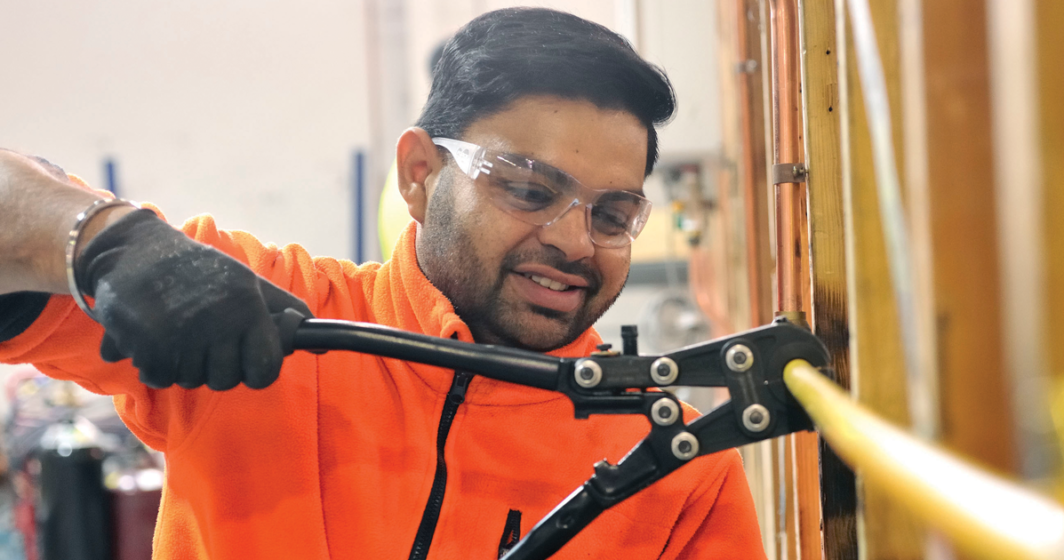The plumbing industry has faced serious skill shortages, both in Victoria and across the country, for many years. Kathryn Kernohan reports.
In Victoria in 2018, less than one quarter [22 per cent] of plumbing vacancies were filled. A report by the Productivity Commission four years earlier found that Victoria had been facing skills shortages in its building, civil and construction occupations for at least a decade.
The Federal Government’s National Skills Needs List also highlights the industry shortfall, alongside similar skills shortages in bricklaying, stonemasonry, carpentry, and painting.

A new report, commissioned by the Office of the Victorian Skills Commissioner (OVSC) in partnership with the Industry Workforce Development Group (IWDG), highlights a range of workforce issues for the Victorian building, civil and construction industry and identifies a suite of recommendations.
Master Plumbers’ CEO Peter Daly, one of the experts who contributed to the report’s collective vision for the future of the industry, says it finds that the building, civil and construction industry is at a crossroads.
“The contribution the industry makes speaks for itself - the building, civil and construction industry in Victoria is the fourth largest employer overall and also the largest employer of full-time workers in the state. The industry added close to $35 billion in value to the economy in the 2018-19 financial year,” he says.
“However we know that finding qualified workers remains a significant issue for employers, this is true in the plumbing industry and other parts of our sector. This report finds that there are no quick fixes to the problem and that a transformation of the industry must focus on addressing longstanding workforce issues.”
The report makes recommendations including growing the pipeline of workers, participation in training, assessment, licensing and registration, and continuing professional development (CPD).
“A greater supply of tradespeople is required to meet demand, in areas including plumbing but also plasterers, bricklayers, surveyors and carpenters,” Mr Daly says. “Master Plumbers has joined our industry colleagues to highlight the need to make the industry an attractive choice for both young people and those interested in switching careers.
“Both course commencements for construction trades, and completions for construction-related apprenticeships have declined in recent years and the true impact of the COVID-19 pandemic is yet to be felt. It is vital that employers continue to offer pathways to apprenticeships and traineeships to ensure a pipeline of new skilled workers,” says Peter.
Peter says that the report also proposes the development of a public awareness campaign to promote available opportunities in the industry, targeting school leavers, adults, parents and carers, and highlighting diversity within the workforce.
The report found that 2019 was the first year in six years where the number of new apprentices (individuals that were not already in the sector) declined. Additionally, it finds that many apprentices who completed an apprenticeship required multiple commencements before completion, and that 30 per cent of apprentices did not complete their apprenticeship.
To address this, the report recommends better support of apprentices that have had a contract cancelled or withdrawn to ensure they are not lost to the industry long-term. Consideration of the current role of skills and jobs centres and apprenticeship support officers and where they may or may not be fulfilling this need, would be one way to achieve this.
The report also highlights some of the Victorian Government’s initiatives such as Free TAFE, the Skills Uplift - Civil Construction pilot program, Careers Education Reforms and the Victorian Skills Commissioner’s establishment of the Apprenticeship and Traineeship Taskforce, however notes the mixed success rates of these initiatives to date.
“Ultimately this report provides the framework for Government and stakeholders to work in a collaborative, coordinated way to address workforce issues and skills shortages across our industries,” says Peter.
“This means better outcomes for everyone - including employers, plumbers, apprentices and customers.”
Improving the industry
Some of the key recommendations highlighted by the report include:
- Increasing recognition of the more than 22,000 Victorian building, civil and construction employers, and the key role they play in developing industry skills
- More robust processes to better inform and prepare apprentices to support them on successful pathways to careers in the industry, and reducing multiple course changes
- Reviewing occupations that do not use apprentices, and ensuring suitable alternative training pathways are in place
- Partnering with industry bodies to increase the number of businesses that can take on and support apprentices to completion
- Introducing mandatory requirements for continuing professional development across the industry
Victoria’s building, civil and construction industry: the stats
- More than 300,000 Victorians work across more than 100,000 businesses that make up the state’s building, civil and construction industry
- Victoria’s building, civil and construction industry added $34.8 billion in value to the economy in 2018-19
- The building, civil and construction industry is the largest in Victoria by number of firms, second largest by value added and the state’s fourth largest employer
Share this Article






